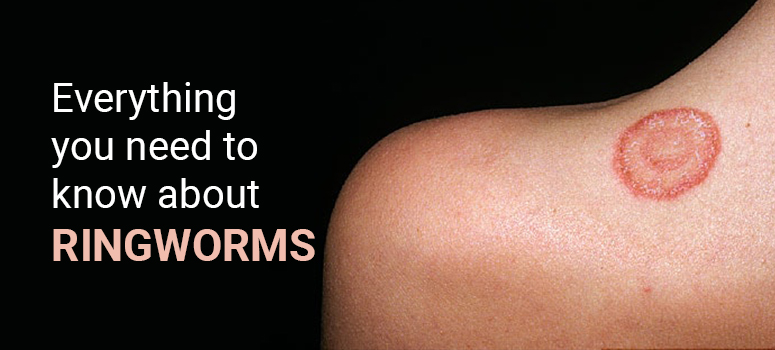Ringworm is a common skin infection that is caused by fungi. These are microorganisms that fall in the family of yeast and molds. Also known as tinea, this infection is characterized by itching skin and ring-shaped rashes. Don’t worry, though, because it has nothing to do with worms. This part of its name comes from the red, worm-like edges that it produces.
There are different types of ringworms dependent on which part of the body they occur on. Though the symptoms might be similar, the treatment and prevention methods may differ. If you are wondering about how to get rid of ringworm infections, it is important to first understand how they happen.<./p>
Causes of Ringworms
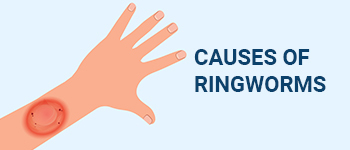
Ringworm is a highly contagious infection with multiple sources. Some of the ways one can catch this infection are:
- Skin contact from an already infected person.
- Caring for an infected animal. Note that cattle are more likely to have it.
- Sharing personal grooming items with an infected person, such as combs and towels. Even sharing clothes may spread it.
- Playing with toys that an infected child has played with.
- Contact with surfaces that have been contaminated, like changing rooms, gyms, yoga mats, swimming pools, sofas etc.
You have an idea of what ringworm is and how it is caused , but how do you treat this condition? We explore some treatment options below.
How to Treat Ringworm
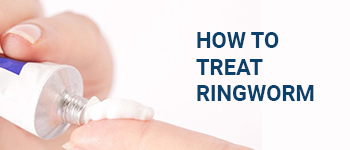
Some of the common medications used are:
- Clotrimazole
- Miconazole
- Terbinafine
- Tolnaftate
People Prone to Ringworms
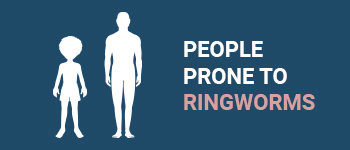
- People below the age of 15.
- People with weakened immune systems/ those using medications that lower immune function.
- Anyone living in warm, humid areas.
- People living with or caring for animals.
- People that wear tight clothing.
- People who play sports.
How to Identify Ringworm
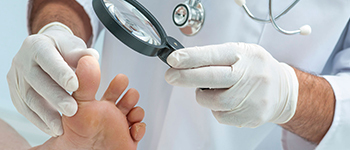
Symptoms of Ringworms
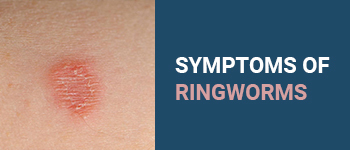
-
-
Feet
-
-
-
- Itching and burning between the toes along with skin peeling.
- Blisters
- The skin between the toes may turn soft and white.
- Foul odor
-
Hands
-
-
-
- Dry skin spread through the palms
- Deep cracks
- Ring-shaped patches
-
Nails
-
-
-
- Thickening nail
- Discoloration
- It May feel like it is crumbling
- May lift from the nailbed
-
Scalp
-
-
-
- Scaly patches accompanied by hair loss .
- May itch and feel like dandruff but will have black dots in the area.
- May also ooze pus.
-
Groin Area
-
-
-
- Itchy, red rash that may be closer to a skin fold.
- May flake and peel.
-
Beard
-
-
- Bumps with pus that may look like acne
- Hair loss
- Swelling and redness
- Crusted skin
Types of Ringworm
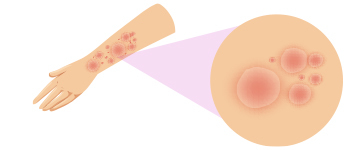
- Ringworm of the scalp: Mostly occurring in children of the ages 3 to 9, this type of ringworm causes patches of hair loss. It spreads easily from pillows, combs and hats.
- Ringworm of the beard (aka Barber’s Itch): This affects the face and neck of bearded people. This may sometimes call the lymph nodes to swell up.
- Ringworm of the body: When infection occurs on non-hairy parts of the body. This has the classic round shape and can happen to people of all ages.
- Ringworm of the groin (aka Jock Itch): This affects people wearing tight-fitting underwear. It usually occurs among young men.
- Ringworm of the foot (aka Athlete’s Foot): Considered as the second most common type, this may occur among people who walk barefoot in gyms/pools.
Skincare Tips for Ringworm Infections
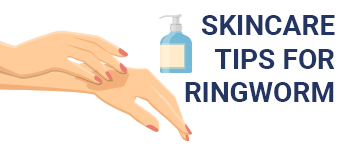
- Wash the area gently and dry it completely before applying medication.
- Make sure to wash clothes or objects that come in contact with the infected area thoroughly in medicated/fungicidal soap.
- Never let the infected area be damp.
- Use a cold press to ease the itching.
- Avoid moving around barefoot and sharing items.
- Avoid scratching the infected area as it may help spread more.
- Wear cotton and absorbent materials as much as possible.
- Be sure to bathe immediately after exercising.
- Follow the dosage as prescribed and do not stop taking the medication on your own. Sometimes, the infection may come back if you haven’t properly completed the course.
- Avoid touching animals that look like they have patchy or infected skin, and always wash your hands after touching any animal.
- If your infection doesn’t seem to respond to treatment, reach out to a dermatologist immediately.
Conclusion
Though it is a common ailment, ringworms can be extremely uncomfortable and spread over the body. Therefore, you must get the infection treated as soon as you spot symptoms.
The best way to prevent reinfection and ensure that it completely heals is to reach out to a dermatologist to help you with treatment options specific to your skin type. This way, you know you can expect effective results!

